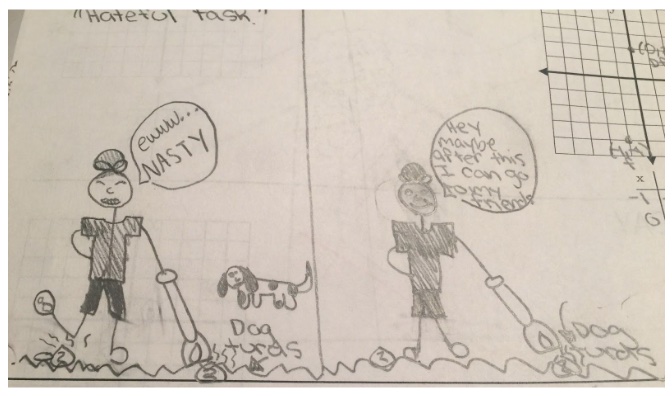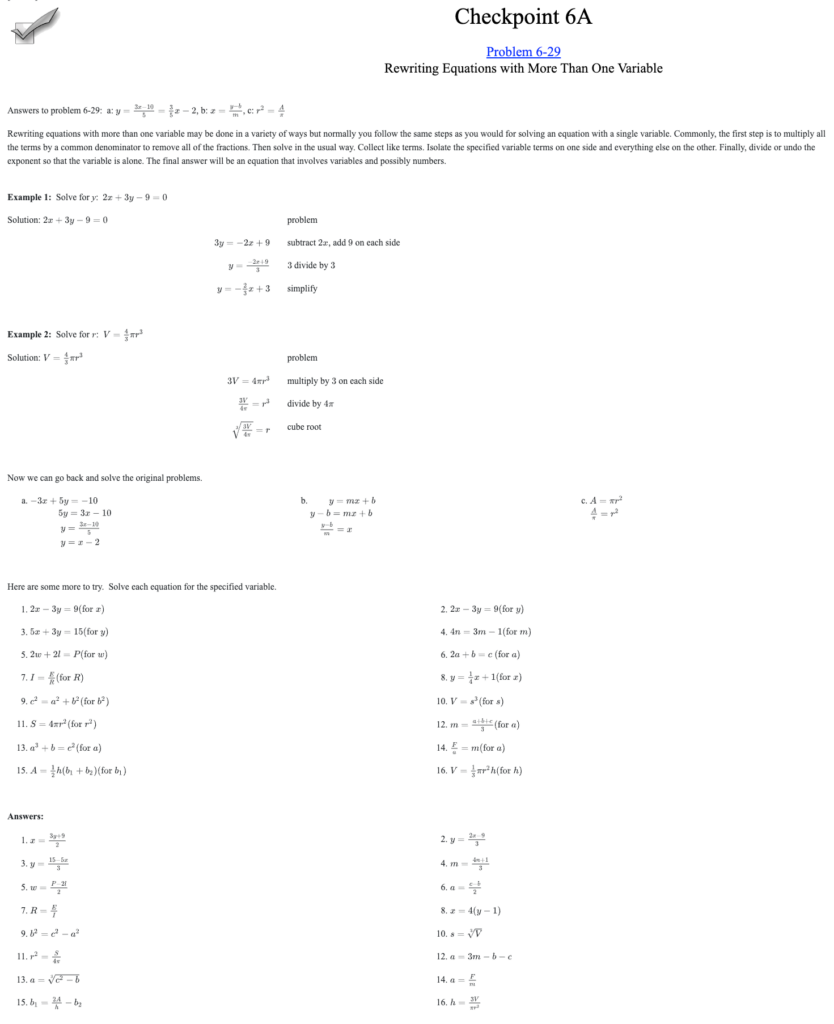Denise Dedini, Kingsburg, CA, denisededini@cpm.org

Elephant #1 First year teaching middle school math, Lesson 2.4. Today’s topic: Properties of Numbers (Commutative, Associative, and Identity). Pacing guide: one 45-minute class period. Expectation: mastery.
Elephant #2 Designing a classroom environment reflective of the “Four C’s of 21st Century Learning” (collaboration, creativity, communication, and critical thinking) when the seats are filled with students carrying the burdens of modern life – lack of motivation, broken homes, poor attendance, over stimulated environments, and social pressure, to name a few.
Elephant #3 Assumptions teachers often make, students know how to study for tests, set and monitor goals, furnish a productive critique of another’s work, and provide justification of one’s own thinking.
Undoubtedly, the list of common “elephants” in today’s educational system could fill up an entire page. What initially appears to be a laundry list of complaints, however, holds the power to positively transform a classroom culture.
For many teachers, a common instructional strategy is to teach to the middle in hopes of providing an education to the broadest student group possible. Unfortunately, the elephant resides in the classroom. What about those who struggle? How about those who need a challenge? For students, working in collaborative teams provides its own unique challenges, another elephant in the room. “I want to be in the ‘smart kid’s’ group,” “He talks too much,” “She is absent all the time.” We know the elephants are there, but do we acknowledge them? Can we learn to embrace them?
Over the past several months, I have served as a teacher researcher with CPM’s Teacher Redesign Corps (TRC). Our group is researching the topic, “Using Goal Setting to Develop a Culture of Investigation.” One prominent theme emerging from my research is that of “the elephant.” These elephants frequently surface as topics we often brush to the side, ignore, or worse, deny their existence. Through the course of my research, I am finding the act of facing and, in fact, embracing the elephants provides a productive, fertile ground for growing a positive culture. For my classroom, the foundation for this idea began early in the school year with the start of our “Mindset Mondays.” Students were guided through an activity that asked them to explore one of the most obvious elephants in their lives. This activity, “The Hateful Task,” begins with the teacher leading a discussion about common chores for which we are responsible around the house, particularly that one chore that we simply cannot stand, also known as “the hateful task.” Students were asked to close their eyes and imagine themselves performing this despised deed. “What are you saying or thinking to yourself as you accomplish this task? How do you feel as you complete it? What expression do you imagine lingering on your face as you face this chore? Now open your eyes and quietly take the next two minutes to make a sketched stick figure drawing of you performing your hateful task. Make sure to include a talk- or thought-bubble of what you are saying or thinking to yourself as you complete this task.” As I strolled through my classroom over the next two minutes, I quickly realized how engaged my students were. Not only were they facing one of life’s dreads, they were enthusiastically embracing the opportunity to acknowledge their hateful task.


At the two-minute mark, the task continued. “Now take a moment to share your artwork, hateful task, and thoughts with your elbow partner.” Again, throughout the classroom there was apparent unanimous student buy-in. Students painted vibrant word pictures for their partners as they held up their stick-figure sketches, all the while commiserating over their shared hateful tasks. The next stage of this task was the mindset shift, originating from a teacher-led discussion on the futility of negative thoughts while performing their task. “Will these thoughts change the task that must be performed? What words or thoughts could replace these ideas that might assist you in accomplishing this task with a more positive outlook?”
After a quick team brainstorm, then whole-class share, the class quickly constructed a nice list of replacement thoughts. Once again, students were directed back to their drawings to complete the alternate sketch. This time, their stick figure would have a talk- or thought-bubble expressing the new, positive thought as they performed their hateful task. As I walked by each team, I noticed the striking contrasting difference a single positive thought made as we collectively faced and embraced our elephants! The stick figures’ faces were transformed from discouragement to determination, from anger to hope, from hopelessness to anticipation. Simply bringing a topic to the surface and challenging a shift in thinking provided a foundation upon which we could build our classroom culture and prepare to tackle tough topics together as teams, and as a whole class.
Since that activity early in the year, these students have faced and embraced other noteworthy elephants as they have surfaced:
- How do I study for a test?
- What do we do about difficult team members?
- What are common obstacles students face in math class?
- How do I set a SMART goal?
- How can we encourage each other toward our goals?
- What does “stand-alone” work look like?
- How can I ask questions as one who is critiquing rather than a criticizer to help a classmate?
While my TRC team originally embarked on our research journey with the focus of student goal-setting, I arrived at the quick realization that goal setting does not come naturally to a large percentage of the clientele I serve. This led us to our elephant adventures where I, as a teacher and role model, found the most relevant way to lead these students through the goal-setting process in a meaningful way, and that is to acknowledge the elephants in real-time and allow students to have a voice in tackling these issues as they arise. Not only does our class enjoy a higher level of student engagement and buy-in, together we are building a culture of interdependence. Although still a work in progress, we no longer avoid, ignore, or push aside our elephants as they arrive. Instead, we face them head on and, in most cases, actually embrace them as threads that bind our community of learners together. Now that, dare I say, is a highly valuable by-product of our goal-setting research!


